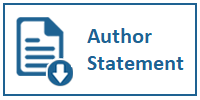Malaysian and Mainland Chinese Social Network Community Users' Perceptions on Post-Mh370 Incident
DOI:
https://doi.org/10.31937/ultimacomm.v12i1.1336Abstract
Aside from the world-of-mouth generated by popular portals and forums, the quality of an opinion community also affects their social media users' perception on certain topics. The advent of social media technologies has dramatically changed the scene in the information world. When Malaysia Airlines flight MH370 went missing, the flow of information experienced complexity uncertainty and ambiguity in terms of information adequacy. Social media plays a vital role in building on a framework of re-trust and friendly perception towards Malaysia Airlines. This paper aims to compare social media users' perception of the Malaysia Airlines missing flight MH370 incident in Mainland China and Malaysia respectively. It reveals a significant difference in user perception of active social media in these two countries. This paper argues that social networking sites, such as Facebook in Malaysia, Weibo and Wechat in Mainland China, become the public opinion field which illustrates sorts of openness and negotiation in Malaysia and Mainland China. In the law enforcement and emergency response community, the historical perception of social media was that it was an alternative option. However, the ubiquity of social media use and the role of social media as the front line of communications in a crisis event has changed that perception. In 2018, 200 questionnaires were collected from respondents in Mainland China and Malaysia respectively. The survey results contributed to the mechanism of crisis communication for henceforth similar incidents in the future. There is no doubt that the portrait of Malaysia Airlines on social media in these two countries affected its organizational reputation. Nevertheless, the participants from Malaysia and Mainland China showed a very average level of confidence to empower themselves to enhance dialog capacity among various stakeholders for this incident.
Downloads
Downloads
Published
How to Cite
Issue
Section
License
Ultimacomm Jurnal Ilmu Komunikasi allows readers to read, download, copy, distribute, print, search, or link to its articles' full texts and allows readers to use them for any other lawful purpose. The journal allows the author(s) to hold the copyright without restrictions. Finally, the journal allows the author(s) to retain publishing rights without restrictions
1. Authors are allowed to archive their submitted article in an open access repository
2. Authors are allowed to archive the final published article in an open access repository with an acknowledgment of its initial publication in this journal















